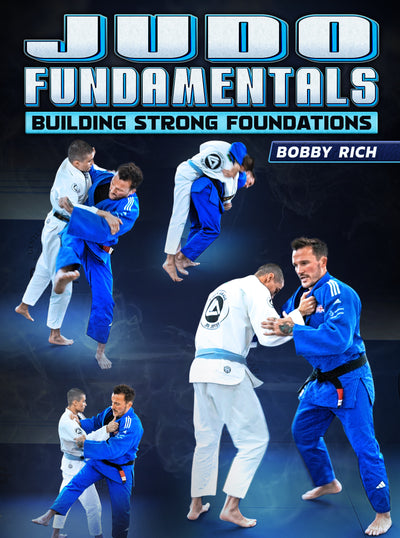Breakdown Barriers With Elio Verde
As a beginner learning Judo can be flat out difficult. Proper placement of the hands and feet can be hard enough, its when you start to add the dimension of launching people to another... dimension is where your brain can feel like it's short circuiting. No worries, you aren’t alone.
There are many strategies to learning, that can be applied to absorbing what you are taught at the academy. Instead of seeing a technique as one continuous sequence chunk it into smaller parts. Overtime with enough practice and application it will smooth out. Have you ever heard of the acronym VARK?
It is an acronym that stands for Visual, Auditory, Read/Write, and Kinesthetic sensory modalities that are used for learning information. Judo lends itself very well to all styles of learning.
Visually you can see the technique performed and make notes of important aspects of the technique.
Auditory Learning can be done by listening to the instructor describe the technique. Pulling away key parts is crucial to making a technique part of your tool kit.
Read/Write style of learning is what you are doing now! Reading about Judo can benefit people by reinforcing what they have learned. Keeping a journal of techniques is a good habit martial artist commonly do. Especially when it comes to technique recollection.
Kinesthetic is to learn by doing. This is where most learning occurs in Judo because of the nature of the sport. You can watch/read/listen all you want but in order to truly understand what you are doing you must DO!
There is a good chance that you know what learning style is best for you. If you are a VAR-type learner look at them as a reinforcement to the kinesthetic part of Judo. while practicing use tools from those learning styles to assist you in performing. Sometimes you’ll hear your people talk themselves through the technique, there is a good chance that person is an auditory learner.
I for one am HEAVY on the auditory side of learning. Regardless of the subject, it’s best explained to me verbally. So when the prospect of learning a new technique from someone who didn’t speak the same language I was slightly apprehensive. Thankfully Judo lends itself very well to all styles of learning. Check out the technique I’m referring to here below.
The drop seoi nage has always been one of my favorite techniques. As a longtime Brazilian Jiu-Jitsu practitioner with spurts of Judo training, the drop seoi nage has always been my go-to when it came to competition. Now that I have gotten more into Judo I’ve been looking for techniques that compliment my favorite throw. That’s where I came across The Drop Seoi Nage Blueprint By Elio Verde.
At first I was thinking that it would be difficult for me to understand the sode tsurikomi goshi. After spending 5 minutes with this video, and Elio I realized that although the language barrier was there, I clearly understood the steps and main concepts of the technique.
Master The Drop Seoi Nage With Elio Verde! Click Learn More!
Elio has a unique way of teaching. At times he will let go of half of the grip and execute the foot work. Sometimes he steps away and does it solo. Sometimes he exaggerates the motions to emphasize their importance. All of these ‘unorthodox’ methods of demonstration caught me off guard. Because they were AWESOME.
For instance the sequence from 2:50-3:00 where he shows how he twists under his partner. Since they are hanging on to their grips Elio is able to frame against their arm with his inside arm. This is a huge factor with sode tsurikomi it seems. Framing with the inner arm allows Elio to elevate his partner before pivoting in for the throw.

The Drop Seoi Nage Blueprint is loaded with more techniques JUST like this. Elio Verde is a SUPERB instructor! Take one of the most versatile techniques and learn how to dominate with it. Not just the Drop Seoi Nage, but everything off of it!



